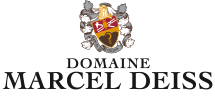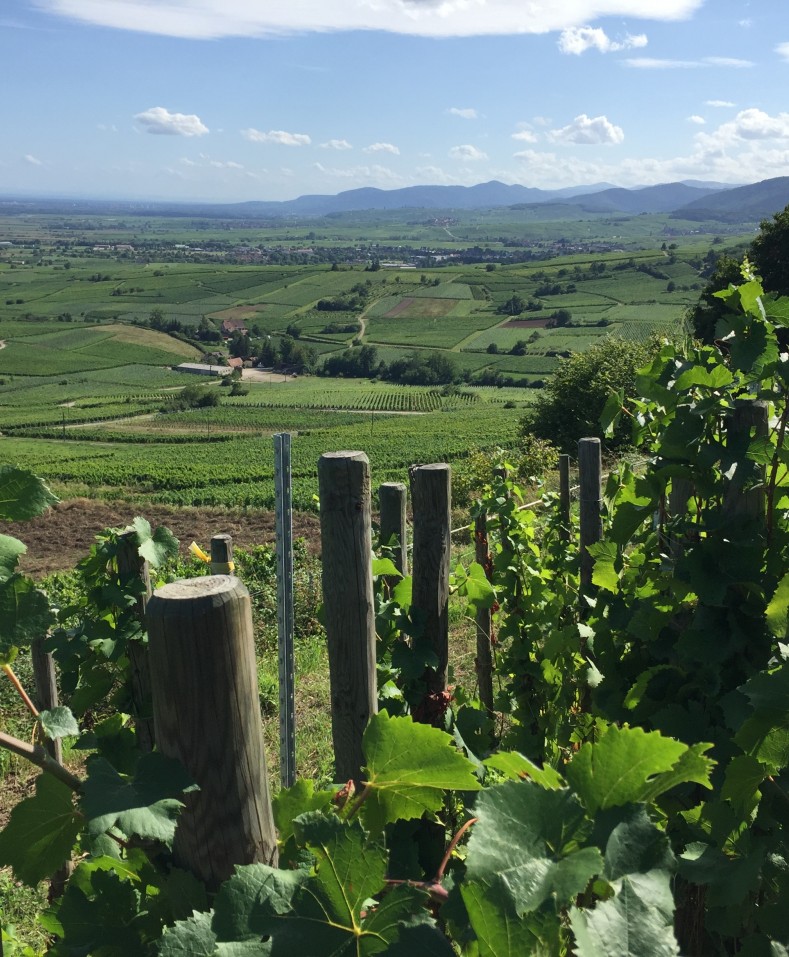For a Terroir to express itself fully, totally in the wine, sometimes even going beyond the expectations of the winegrower, it is important that the intimate springs that bind for each place, the subsoil, the soil, the sky, the plants and the peasant be freed from simplistic technical causalities, routine conformisms and above all from the caricatured classifications of the Enlightenment.
The Quest of the Soil and Biodynamics
The quest for Terroir
The Biodynamy
This is what the biodynamic point of view aims to achieve. It does not address visible, concrete and tangible things, but rather the invisible background that accompanies them: that which links the infinitely small to the entire cosmos. This invisible world, which nevertheless acts on us, our moods, joys and fears, acts on the earth, the soil, plants and animals, and can only be reached by pure intention. It is thanks to biodynamic preparations, and more than anything else to the strong desire to implement them, that we reach this parallel world and find, after renouncing technological domination over Nature, our rightful place as farmers in agricultural creation. The desire to find one's place, just one's small place in the greater whole, is the natural posture of the peasant, who lives a long time, the chain of generations that shapes the landscape and at the same time the finiteness of all human conditions.
The biodynamic approach towards a viticulture of living organisms
If biodynamics proposes to address the intimate energies of things, it can only succeed in acting on nature on the obvious condition of having previously renounced the whole of the 20th century's agronomic corpus, built on the grotesque idea of man's domination over nature. To consider the soil as a simple support, to bring fertilizers and weed killers, to use synthetic phytopharmaceuticals, to aim for excessive yields has a serious impact on the sustainability of the vineyard, to use increasingly sophisticated machinery, all this is incompatible with the expression of the terroir and the honour of the winegrower. On the contrary, we must rediscover the posture of the humble peasant, thrifty of his weak forces, tirelessly observing the natural rhythms, connected to his environment near and far, finding local compost, herbal teas, and a benevolent posture that allows the environment to give without disruption of balance, a legitimate harvest, fair is sustainable, a harvest of high energy value. It is with the intention of a true viticulture of the living that we work, a viticulture which would have lost its predatory dimension of agricultural exploitation, which would have lost its radicality of absolute monoculture and would henceforth aim at a triple benevolence: towards the sovereign nature, towards the wine itself, towards the customer finally.
We have been preparing this viticulture of the living since our first organic certification more than 25 years ago, and every day, every vintage, we are making progress in this direction. It is clear that the covid 19 crisis is accelerating this process. Tomorrow we will only intervene marginally with few passages in the plot, a saving of each input, replaced by the presence of a winegrower. Since 2020, we have given each member of the team a set of plots to prune, disbud, trellis and maintain: in a word, to serve!

Biodiversity and Agroforestry
This project of service to the site and the vineyards cannot be conceived without full attention to the soil and the landscape. Above all, it aims to restore the very secret relationships that bind all those involved in the soil: this is the formidable adventure of the mycorrhizae, these benevolent symbioses in which each person brings his or her own voice in exchange for balance, protection and a relationship. This is how the direct sowing of varied honey and flower seeds to diversify the flowers, restore soil structure and the intrinsic fertility of the soil (use of legumes), the measured use of ploughing designed solely as a preparation for sowing soils that do not get dirty naturally, and finally, agroforestry, have gradually come to dominate our daily technologies. Thus we have got into the habit of planting fruit trees (rosaceous) in our plots, because they provide shade, nest boxes for birds, and above all they share their mycorrhizae with the vine, making it more hardy and less susceptible to viticultural diseases: a tree-planted vine sees its parasitic pressure, and therefore the need for daily treatment, be halved on average. Thus, even in a very wet vintage such as 2016, we never exceeded 1 kg of copper metal per hectare, 700 g per year being our long-term annual standard: a much lower dose than a living soil can mobilize without worry each year, without seeing a residue accumulating as a threat for the future. Finally, how can we conceive of a living, nourishing and caring wine from an empty landscape, without trees, without birds and bees, without history and, finally, without farmers? We work every day to set an example of respectful viticulture, searching within it, at the foot of the vines themselves, for the resources, plants, humus and herbal teas that enable us to implement the great design of the 21st century, a design that the advent of covid-19 reminds us of: to put sustainability back at the heart of our relationship with the environment.
Biodynamics in practice
Biodynamics is the most respectful way towards nature, which allows us to express each of our terroirs with a deep originality. It implements the root work of the plant, in an environment free of synthetic products. It is based on the following points:
In the vineyard:
- Respect for astronomical cycles
- Implementation of biodynamic preparations
- Exclusion of weed killers, by working the soil, which also allows good colonisation of the soil by the roots, and thus full expression of the terroir.
- The exclusive contribution of compost, which supports the soil's microbial life, because synthetic fertilisers disorganise the soil and bring excessive vine growth.
- Exclusive use of natural products (nettle, horsetail, sulfur, ...) to fight against diseases, and therefore total exclusion of synthetic products that are highly toxic for the environment (groundwater, peripheral fauna and flora) but that are also found in grapes and wine.
- Use of massal selections and planted grape varieties to respect biodiversity
- Encouraging the development of wildlife and auxiliary forest by restoring hedges, fruit trees and insect or mammal nests in the vineyard.
- Leads to AB and Demeter certification
In the cellar:
- No synthetic yeasts are used, only natural yeasts from each grape and each vineyard.
- Respect for the natural fermentation process: no addition of nitrogen deficiency correctors, no addition of bacteria or enzymes; no aromatic additives.
- No chaptalization or acidification or deacidification
-No addition of gum arabic






